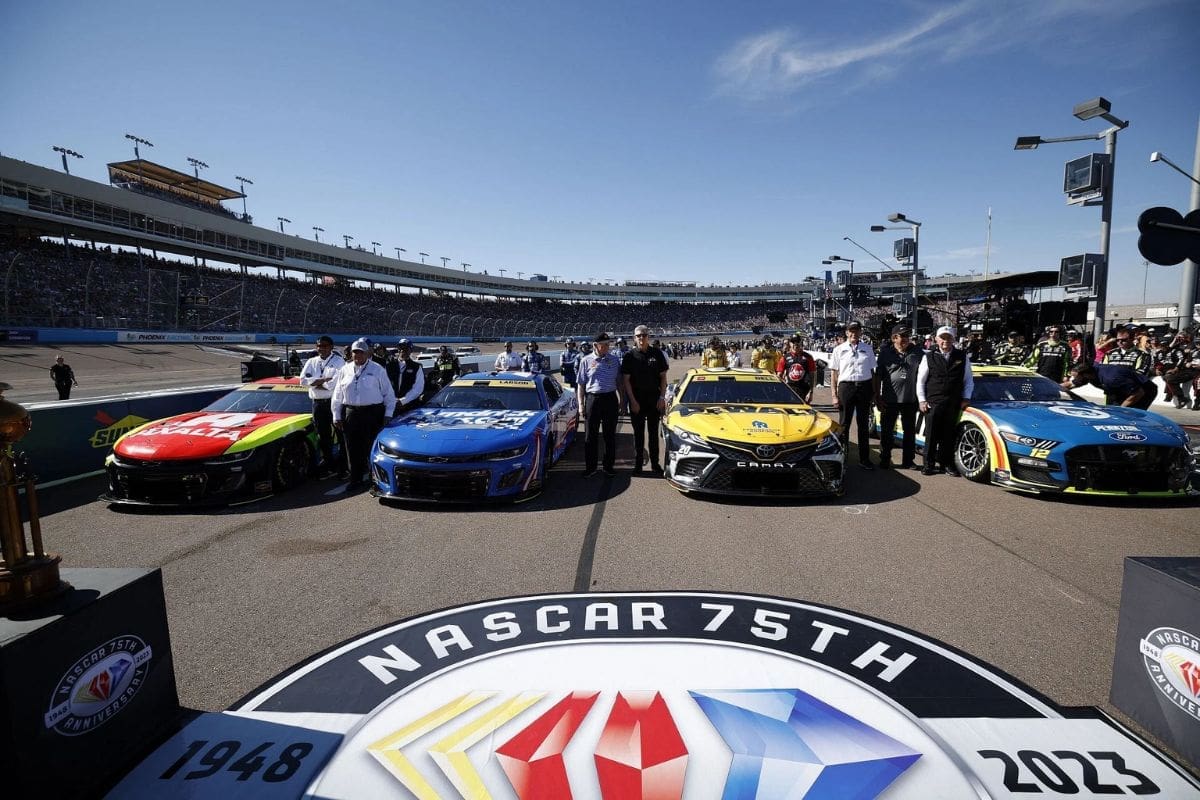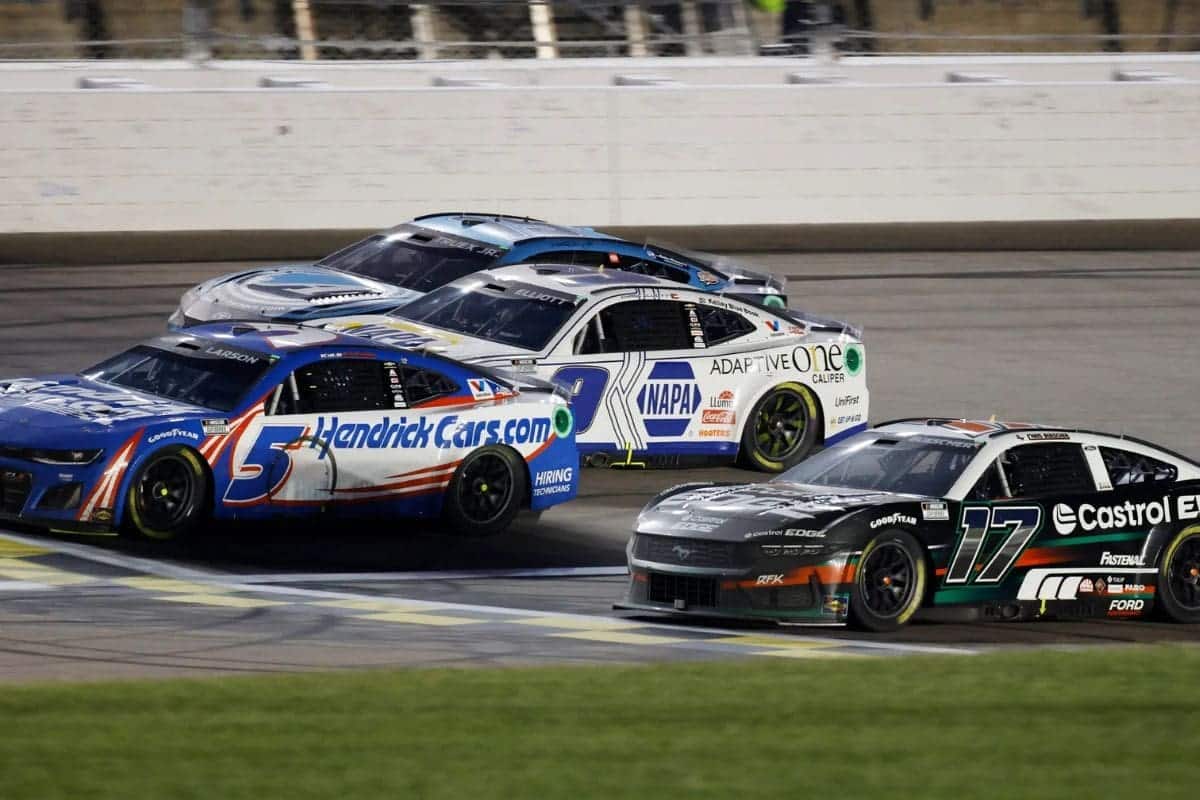Charlotte Vs. Daytona: The ongoing debate regarding whether Charlotte or Daytona holds the true essence of NASCAR’s homecoming presents an intriguing examination of the sport’s identity. Daytona Beach, the historical cradle where NASCAR was born, evokes nostalgia and reverence. Contrastingly, Charlotte has emerged as the contemporary epicenter with its advanced facilities, housing the majority of teams and serving as the nerve center for operations and strategy.
Key Highlights
- Daytona Beach Road Course hosted NASCAR’s first race in 1948, marking its historical significance.
- Charlotte is the contemporary hub of NASCAR operations, centralizing team headquarters and industry events.
- Charlotte Motor Speedway’s state-of-the-art facilities foster innovation and support top NASCAR teams.
- The NASCAR Hall of Fame in Charlotte serves as a cultural and historical hub, reinforcing the city’s importance.
- NASCAR’s governance and regulatory decisions are centralized in Charlotte, emphasizing its operational coherence.
Charlotte vs. Daytona: Home of NASCAR
While Daytona International Speedway (Daytona 500) is revered as the birthplace of NASCAR, Charlotte, North Carolina has solidified its position as the epicenter of the sport’s contemporary operations and culture. This shift from Daytona to Charlotte as the central hub of NASCAR can be attributed to several critical factors that have reshaped the sport’s landscape over the years.
The historical significance of Daytona cannot be overstated. It was at the Daytona Beach Road Course that NASCAR held its inaugural race in 1948, an event that laid the foundation for what would become one of the most popular motorsports in America.
However, as NASCAR evolved, the operational needs and cultural heartbeat of the sport began to shift towards Charlotte. This strategic relocation was driven by the city’s robust infrastructure and its burgeoning role as a crucial logistical nexus.
Charlotte’s transformation into NASCAR’s operational core is further highlighted by its geographical convenience. Situated in the heart of the southeastern United States, the city offers excellent access to numerous tracks and major highways, facilitating efficient transportation for teams and equipment. This logistical advantage is complemented by Charlotte’s expansive network of racing facilities, including the Charlotte Motor Speedway which hosts major NASCAR events and provides state-of-the-art training grounds.
Moreover, the concentration of NASCAR team headquarters, suppliers, and related industries in the Charlotte area has created an ecosystem that fosters innovation and collaboration. This clustering effect not only streamlines operations but also cultivates a vibrant community of professionals dedicated to advancing the sport.
Charlotte’s Significance
Charlotte’s quad-oval track importance in the world of NASCAR is highlighted by its role as the birthplace of the Cup Series and its position as the operational headquarters for many of the sport’s top teams. The inaugural race of the strictly stock category, which would evolve into today’s Cup Series, was held at Charlotte Speedway in 1949, setting the stage for the sport’s storied history. This seminal event marked Charlotte as the cradle where NASCAR began its progressive evolution from a regional spectacle to an internationally recognized motorsport.
The city’s significance is not only historical but also deeply embedded in the operational dynamics of NASCAR. Charlotte is home to the bases of several high-profile teams, including Joe Gibbs Racing, Richard Childress Racing, and the recently established 23XI Racing. These teams represent the pinnacle of competitive engineering and strategic excellence within the sport, emphasizing Charlotte’s role as a hub of innovation and expertise in NASCAR.
“NASCAR headquarters stuff is down here, and the teams’ side is a lot more centrally located in North Carolina.” – chase Buescher
Moreover, Charlotte’s influence extends beyond the racetrack. The presence of these top teams in the city creates a vibrant ecosystem that supports an array of ancillary industries, from cutting-edge automotive technology firms to specialized training facilities. The concentration of talent and resources in Charlotte fosters a unique environment where the competitive spirit of NASCAR can flourish, driven by a relentless pursuit of performance and victory.
Central Location and Industry Presence
The central location of Charlotte, combined with its dense concentration of NASCAR-related activities, positions the city as a critical hub for the sport’s operational and strategic endeavors. Situated in the heart of North Carolina, Charlotte benefits from proximity to a majority of NASCAR team headquarters, which are mainly located in and around Huntersville. This geographical advantage facilitates seamless coordination and rapid communication amongst teams, improving the sport’s efficiency.
The presence of NASCAR in Charlotte is not merely limited to team headquarters. The city is home to a significant portion of the sport’s workforce, including drivers, pit crew members, and administrative personnel. This concentration fosters a rich environment of collaboration and innovation, as individuals share insights and strategies within a close-knit community.
“I’m not sure what employee doesn’t live in Charlotte or within 20 or 30 minutes in North Carolina.”
“And if anybody wants to win, they want to win in front of their family and at Charlotte.” – Carson Hocevar
This infrastructure supports the day-to-day operations of NASCAR teams and solidifies Charlotte’s role as the epicenter of the sport. The city’s strategic location and industry presence are essential assets that contribute significantly to NASCAR’s ongoing success and evolution.
Historical Moments at Charlotte Motor Speedway
Beyond its operational significance, Charlotte Motor Speedway has been the stage for some of the most defining moments in NASCAR history, showing the sport’s commitment to integrity and regulatory rigor. A notable event in the 1950s highlights this dedication when Bill France Sr., the founder of NASCAR, took a crucial stance on rule enforcement. This period was critical for the sport, as it sought to establish its legitimacy and maintain a level playing field amidst its growing popularity.
During a race at Charlotte, infractions were detected that threatened to undermine the sport’s credibility. France Sr. did not waver in his resolve, enforcing penalties despite potential backlash. This incident emphasized the importance of stringent regulations and set a precedent for the sport’s governance. It wasn’t just a race; it was a demonstration of NASCAR’s dedication to upholding the integrity of competition, even when faced with legal challenges.
“Glen Dunaway was driving a Ford and in post-race inspection, they found out there were modifications in the rear of the car that were not stock. The back story is just a few days earlier, this car was being used to run moonshine. NASCAR disqualified Dunaway and that moved second-place finisher Glen Roper up to be the winner.” – NASCAR historian Ken Martin
The firm enforcement of rules at Charlotte Motor Speedway helped solidify NASCAR’s authority, establishing a governance structure that would guide its evolution. This significant moment proved that the sport was not just about the thrill of speed but also about maintaining a set of standards that would guarantee fair competition and inspire confidence among fans and participants equally.
Legacy and Legal Recognition
In examining NASCAR’s evolution, the legacy of its founding principles and the legal recognition of its governance are critical factors that have cemented Charlotte Motor Speedway’s status as the epicenter of the sport.
The disqualification of Glenn Dunaway in NASCAR’s inaugural race in 1949 at Charlotte Motor Speedway marked a crucial moment in establishing the sport’s commitment to fairness and integrity. This decision highlighted the necessity for stringent regulations and impartial adjudication, elements that have become fundamental to NASCAR’s identity.
The legal recognition of NASCAR’s authority was further solidified through the establishment of a robust governance structure, primarily headquartered in Charlotte, North Carolina. This centralization of power not only reinforced the procedural and operational coherence of the organization but also emphasized Charlotte’s preeminence in the NASCAR community. By housing the main offices, research and development facilities, and training centers in Charlotte, NASCAR has embedded the city deeply within its operational fabric.
“A judge ruled that Bill France had the right to set the rules and establish guidelines and he upheld the disqualification.” – Ken Martin
Daytona Beach, while historically significant for its role in the sport’s early days and as the site of the iconic Daytona 500, has seen its influence wane in comparison to Charlotte’s burgeoning prominence.
The question of whether Daytona should be sidelined as NASCAR’s home is complex, yet the legal and operational weight accorded to Charlotte suggests a natural evolution of the sport’s nucleus towards the latter.
News in Brief: Charlotte Vs. Daytona
The contrast between Charlotte and Daytona as NASCAR’s true home reveals a complex interplay between historical reverence and contemporary operational dominance.
While Daytona Beach Road Course symbolizes NASCAR’s storied inception, Charlotte has emerged as the epicenter of modern NASCAR activities.
This duality highlights the importance of balancing tradition with innovation, as Charlotte’s advanced infrastructure and concentrated industry presence increasingly command recognition, potentially reshaping NASCAR’s conceptual and operational core.
Our Reader’s Queries
Q. Is Charlotte known for NASCAR?
A. For over six decades, Charlotte Motor Speedway has been the epitome of motorsports excitement, earning its title as “America’s Home for Racing.” Situated in the heart of NASCAR territory, this legendary superspeedway stands as a beacon for racing enthusiasts. It’s not just a venue; it’s a pilgrimage site for fans seeking the ultimate race vacation experience. Here, spectators can fully immerse themselves in the sport, soaking up the thrill and energy of a live event like nowhere else.
Q. Why is Charlotte famous for NASCAR?
A. Since the unveiling of Charlotte Motor Speedway in 1960, coupled with Holman-Moody, Ford Motor Company’s racing division, establishing its base near Charlotte Douglas Airport during the same era, the Queen City swiftly ascended to the title of the “Stock Car Racing Capital of the World.” This moniker gained even more prominence thanks to the plethora of…
ALSO READ: NASCAR’s Proposal to Downsize HMS and JGR Sparks Outrage




